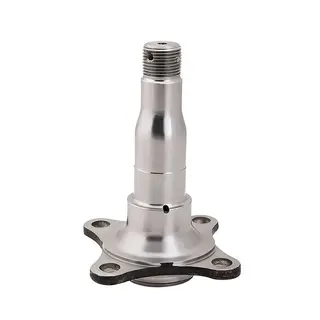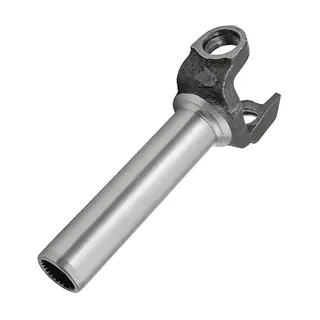In modern industry, aluminum alloy forgings are highly favored for their excellent performance. They not only possess high strength and low density but also exhibit good corrosion resistance and machinability, making them widely used in aerospace, automotive manufacturing, mechanical engineering, and many other fields. However, despite the numerous advantages of aluminum alloy forgings, some common defects may still occur during the production process. These defects not only affect the appearance quality of the products but may also reduce their mechanical performance and service life. This article will provide a detailed introduction to the common defects of aluminum alloy forgings and discuss how to reduce these defects through reasonable process control and quality inspection to ensure high product quality and reliability.
Among various defects, surface defects are the most intuitive and easily detectable. Surface defects not only affect the appearance of the product but can also become stress concentration points, reducing the service life of the forging. The following sections focus on the surface defects of aluminum alloy forgings and their causes.
Cracks are one of the most common defects in aluminum alloy forgings. They usually occur during the forging process, mainly due to uneven temperature, excessive forging force, or unreasonable die design. Cracks not only affect the appearance of the forging but may also reduce its strength and corrosion resistance. For example, during forging, if the local temperature is too high or too low, the metal's fluidity and deformation resistance will change, increasing the risk of crack formation. In addition, excessive forging force may lead to stress concentration inside the metal, forming cracks. Unreasonable die design, such as a die with too small a fillet radius or insufficient draft angle, also increases the likelihood of cracks.
During forging and subsequent processing, the surface of the forging may be scratched or abraded. These defects not only affect appearance but may also become stress concentration points, reducing the service life of the forging. Scratches and abrasions are usually caused by rough die surfaces or improper handling. For example, if there are scratches or burrs on the die surface during forging, they may leave scratch marks on the forging surface. Additionally, if operators are careless during handling or processing, it is easy to cause surface abrasions on the forging.
During high-temperature forging, aluminum alloy surfaces are prone to oxide scale formation. Oxide scale not only affects surface quality but may also cause increased tool wear during subsequent processing. The formation of oxide scale is mainly due to the chemical reaction of aluminum alloy with oxygen in the air at high temperatures. For instance, if the heating temperature during forging is too high or the heating time is too long, the aluminum alloy surface is more likely to form oxide scale. In addition, if the cooling rate after forging is too fast, the oxide scale may become more severe.
In fact, internal defects also have a profound impact on the performance and quality of forgings. These internal defects are often not directly observable, but their presence may cause serious consequences during use. The following sections provide a detailed discussion of the internal defects of aluminum alloy forgings and their causes.
Porosity is a common internal defect in aluminum alloy forgings, usually formed due to gas not being expelled in time during forging. Porosity reduces the strength and toughness of the forging, affecting its mechanical performance. For example, during forging, if the die's venting channels are poorly designed, gas cannot escape smoothly, resulting in porosity inside the forging. In addition, if the forging equipment does not have sufficient tonnage to provide enough pressure for metal flow, porosity is also likely to occur.
Inclusions refer to non-metallic substances, such as oxides and sulfides, mixed into the forging during the forging process. Inclusions reduce the strength and toughness of the forging and increase crack susceptibility. For example, if the aluminum alloy raw material contains excessive impurities such as iron or silicon, inclusions may form. Additionally, improper operations during forging, such as uneven metal flow or rapid cooling, can also cause inclusions to enter the forging.
Laps or voids refer to the porous structure inside the forging, usually caused by uneven metal flow or excessively fast cooling during forging. Laps reduce the density and strength of the forging, affecting its performance. For example, if forging force is uneven or cooling speed is inconsistent during forging, metal flow will be uneven, resulting in laps. In addition, if forging temperature is too high or too low, it will affect the fluidity and filling ability of the metal, further causing laps.
During the production of aluminum alloy forgings, in addition to surface and internal defects, dimensional and shape defects also have a significant impact on the final performance and application of the product.
Dimensional deviations may occur due to improper die design, uneven forging force, or inconsistent cooling. Dimensional deviations affect the assembly accuracy and performance of the forging. For example, if the die has insufficient dimensional accuracy or is severely worn during forging, dimensional deviations in the forging may occur. Furthermore, uneven forging force or inconsistent cooling rates can also lead to inaccurate dimensions.
Irregular shapes refer to forgings whose appearance does not meet design requirements, usually caused by die wear, unstable forging processes, or improper operation. Irregular shapes affect both appearance and assembly performance. For example, severe die wear or improper operation during forging may result in irregular shapes. Additionally, if the forging process is unstable, such as temperature fluctuations or uneven forging speed, irregular shapes are more likely to occur.
Defects in aluminum alloy forgings during production are usually the result of multiple factors acting together. These factors include forging process parameters, die design and maintenance, raw material quality, and operational procedures.
Forging temperature is an important factor affecting the quality of aluminum alloy forgings. Excessive temperature may cause overheating, forming oxide scale or cracks, while low temperature may result in poor metal flow, leading to laps or incomplete filling. Therefore, proper control of forging temperature is key to reducing defects.
The magnitude of forging force directly affects metal flow and deformation. Excessive force may cause cracks, while insufficient force may result in inadequate metal flow, causing dimensional deviations or irregular shapes. Therefore, reasonable control of forging force is an important step in ensuring forging quality.
Cooling rate has a significant impact on the internal structure and performance of the forging. Excessively fast cooling may generate thermal stress, causing cracks or laps, while too slow cooling may lead to grain growth, reducing strength and toughness. Therefore, reasonable control of cooling rate is an important measure to reduce defects.
Improper die shape, size, or cooling system design may cause surface or internal defects in the forging. For example, poorly designed venting channels may cause porosity. Dies also wear over time, leading to irregular shapes or dimensional deviations in forgings. Regular inspection and maintenance of dies is therefore an important measure to reduce defects.
If the aluminum alloy raw material contains excessive impurities such as iron or silicon, inclusions may form, affecting mechanical performance. Uneven composition may also lead to uneven metal flow during forging, causing laps or cracks. Therefore, strict control of raw material quality is fundamental to ensuring forging quality.
After understanding the types and causes of common defects in aluminum alloy forgings, the following sections discuss how scientific and reasonable measures can reduce these defects, improving overall forging quality and production efficiency.
Control forging temperature reasonably: Choose the forging temperature range according to the characteristics of aluminum alloy, avoiding excessively high or low temperatures. This can be achieved through precise temperature control equipment and process parameter optimization.
Control forging force reasonably: Select forging force according to the shape and size of the forging to avoid excessive or insufficient force. This can be achieved by optimizing forging processes and equipment parameters.
Control cooling rate reasonably: Choose cooling rate according to the shape and size of the forging to avoid excessively fast or slow cooling. This can be achieved by optimizing cooling system design and process parameters.
Design die shape and size reasonably: Ensure that the die shape and size allow uniform metal flow and complete filling of the cavity according to the forging design requirements.
Optimize die cooling system: Design the cooling system to ensure uniform cooling of the forging, avoiding thermal stress.
Regular inspection and maintenance of dies: Check die wear regularly and repair or replace worn components in time to ensure accurate die shape and size.
Strictly control material composition: Select high-quality aluminum alloy raw materials and strictly control impurity content to avoid inclusion formation.
Ensure uniform material composition: Use reasonable raw material processing and treatment processes to ensure uniform composition, avoiding uneven metal flow during forging.
Surface inspection: Detect scratches, abrasions, and oxide scale through visual inspection and ultrasonic testing.
Internal inspection: Detect porosity, inclusions, and laps using X-ray or ultrasonic testing.
Dimensional inspection: Measure dimensional deviations and shape irregularities using precise measuring tools.
Aluminum alloy forgings are widely used due to their excellent performance, but common defects may occur during production. These defects not only affect appearance quality but may also reduce mechanical performance and service life. By optimizing forging processes, improving die design, strictly controlling raw material quality, and strengthening quality inspection, defects in aluminum alloy forgings can be effectively reduced, ensuring high-quality and reliable products. In actual production, a comprehensive analysis and optimization based on specific conditions should be carried out to achieve the best production results.



